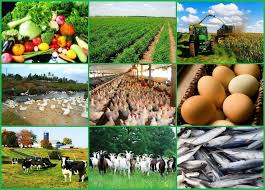The cash flow plan is an essential financial management tool for agribusiness operations. It addresses one of the most serious financial challenges faced on farms today managing cash flow effectively. The cash flow plan is the central component of the annual farm planning process.
When prepared carefully and in sufficient detail, it provides a comprehensive financial picture of the farm enterprise, including decisions about enterprise selections, input needs, feed requirements, credit needs and repayment capacity, family living needs, and marketing plans.
To be most useful, cash flow should be projected, serving as a plan for the future. Actual cash flow (farm receipts and expenses) can then be compared with projections to assess business progress and identify any necessary adjustments.
Read Also: Types of Pig Feeds and When to Feed Each
Definition of Cash Flow in Agriculture

Cash flow can be defined as the projection or actual estimates of the flow of revenue into the farm business and the flow of actual or projected expenditures out of the business. A cash flow plan is an essential financial management tool for farmers, addressing issues related to the control of cash.
It does not provide information about profitability; that data is available through the income statement. Cash flow does not account for inventory changes, accounts payable or receivable, or depreciation, and profitability decisions based solely on cash flow can be misleading.
Importance of Cash Flow in Farming
Cash flow plays a critical role in identifying when cash surpluses or deficiencies will occur. It offers a financial overview of the farm enterprise, including input needs, feed requirements, credit needs and repayment capacity, family living costs, and marketing strategies.
It helps estimate the timing and amounts of financial transactions and allows for comparison between actual cash flow (farm receipts and expenses) and projected cash flow, enabling timely adjustments to business practices if needed.
Preparation of Cash Flow for Farm Operations

Cash flow should be prepared on a monthly and annual basis. The monthly cash flow allows farm managers to determine specific dates when loans are needed, when loan repayments can be made, and when inputs should be purchased.
Cash flow is most effective when it is projected, providing a financial plan for the future. A cash flow projection can be developed using two methods:
1. Using Previous Year’s Operations: The first method involves basing the cash flow projection on information from the previous year’s farm operations. Revenue and expenses in the current year can be estimated by adjusting last year’s figures for changes in prices and farming operations. While quick, this method may not provide a high degree of accuracy.
2. Using Current Year Plans: The second method involves basing the projection on the current year’s farm operations. This requires several steps:
i. Determining the scope of crop and livestock enterprises, collecting detailed revenue and cost data, preparing enterprise budgets, deciding on the technology to adopt, and identifying the necessary inputs.
ii. Estimating monthly enterprise income and expenses, including the timing of input purchases and machinery operations. Revenue estimates must be made for product sales, producing a monthly flow of income and expenses for all crop and livestock enterprises.
iii. Planning capital investment transactions, such as purchases, trades, or sales of capital items.
iv. Including nonfarm earnings, such as wages, salaries, interest income, and other sources of nonfarm revenue, in the projected consolidated cash flow.
v. Planning debt repayment, ensuring surplus funds are available for payments in the appropriate months.
Read Also: Erysipelas in Pigs: Causes, Signs and Methods of Treatment
Analysis of Cash Flow in Agriculture

The analysis of cash flow involves continuous monitoring of receipts and expenditures and comparing actual performance against projections.
A key advantage of cash flow analysis is its ability to provide early warnings about the financial health of the business. When major discrepancies arise between projected and actual cash flow, it is important to review financial transactions and production practices to identify the reasons for the differences.
The key areas of focus for cash flow analysis are total cash receipts, total cash expenses, new debts, interest and principal payments, and the cash balance. Projected amounts for each of these should be compared with actual figures on a monthly basis. Significant differences may indicate the need to adjust crop or livestock production plans, capital investment plans, or family living expenditures.
While cash flow is useful for determining whether current returns are sufficient to cover current expenses, debt, and family living costs, it should not be relied upon alone to evaluate the financial health of a farm business. A comprehensive analysis should include a review of the balance sheet and the income statement in addition to the cash flow.
Do you have any questions, suggestions, or contributions? If so, please feel free to use the comment box below to share your thoughts. We also encourage you to kindly share this information with others who might benefit from it. Since we can’t reach everyone at once, we truly appreciate your help in spreading the word. Thank you so much for your support and for sharing!
Read Also: Advantages of Waste Recycling

